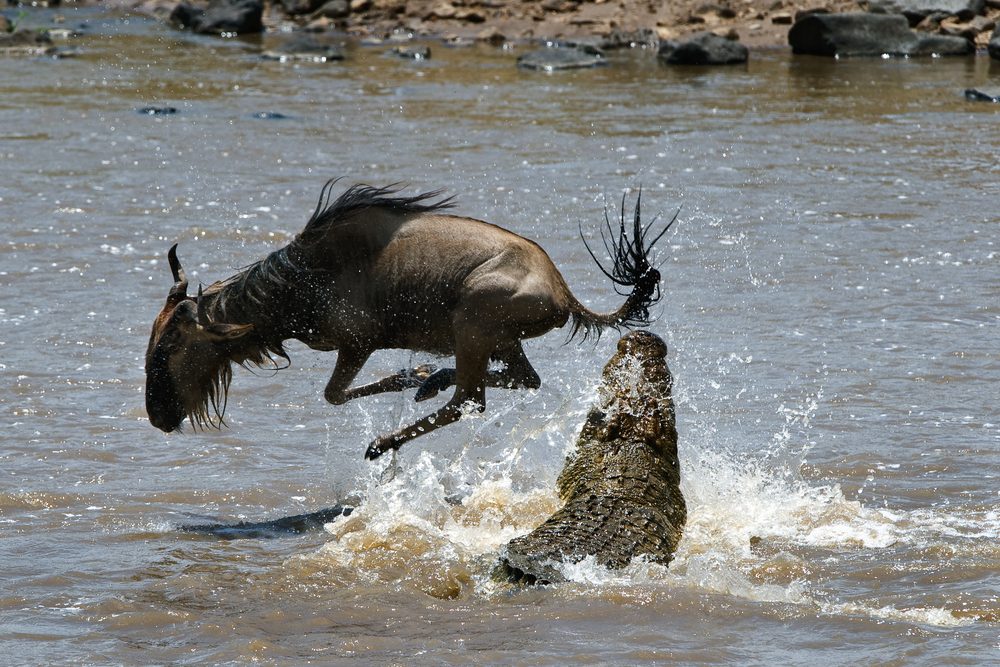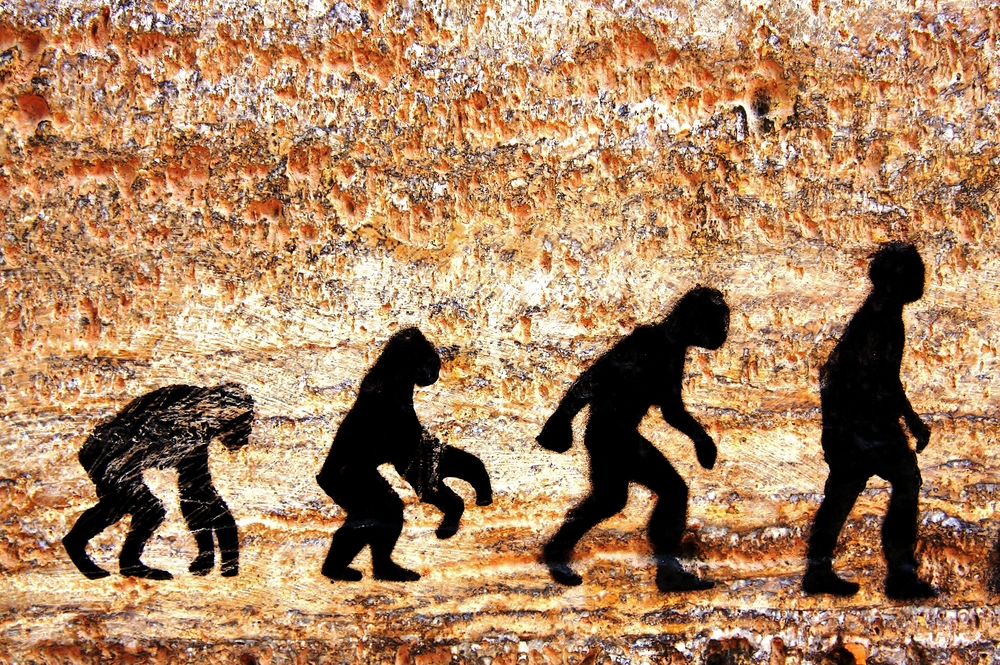Sensational Science Saves Lives (yep, that's why you clicked)
‘‘Let a Gazette come out filled with the finest descriptions of prosperity, general health, growing trade, internal peace and prevailing virtue [and] it will be read almost with indifference and thrown away ... In contrast, let a Gazette inform us in detail [of a plague, civil war, or dreadful famine and] this paper would deeply engage the attention, be read over and over again and pronounced a valuable paper’’ – Independent Ledger, January 26, 1784
It’s all your fault. (Ok, that’s a little harsh. It’s your biology’s fault. It’s evolution’s fault.)
You know the headlines. The headlines you can’t help but click on in a Tweet or a Facebook post…. “and you won’t believe what happens next!” And you know the news stories and the blog posts. The ones that are heated and feature conflict or controversy. The ones covering sensational science. The ‘wow’ or ‘oh shi&’ science articles about the newly discovered dangers of this virus or that faux-pas lab protocol.
As a journalist, or a blogger, some stories you just know are going to hit a chord. And some stories really do deserve front page status, or an all-nighter blog post. Whether they cover something unexpected or controversial, something with the potential to impact a large amount of people, something related to a famous scientist (ahem Neil DeGrasse Tyson) or something with high potential for impact or damage. Journalists often refer to these stories as particularly newsworthy, citing news factors such as proximity, prominence, unexpectedness, conflict, continuity (something newsworthy because it’s already in the news), personification (reference to persons – because we relate better to our own species), relevance and negativity.
Whether we laud or criticize the presence of these news factors in the newspaper articles and sometimes the blog posts we read, we don’t often consider why they are there. Or rather we just assume they are there because journalists and some bloggers put them there. When we criticize sensational and controversy-based science news, we often criticize it on the basis that journalists have been long-trained to look for stories that are sensational, unexpected and controversial. But why?
What if I told you these news factors are there, and they make a difference to how well you remember the news articles you read, because you’ve evolved to look for them and remember them?
This is an evolutionary theory approach to understanding news values, or the relevance indicators that journalists use when deciding if a story is worth covering and how prominently.
“It is characteristic of all humans, not just journalists, to monitor the world around us, and we share this characteristic with much of the animal kingdom. Lasswell (1960) calls it the ‘surveillance’ function of news. ‘In some animal societies certain members perform specialized roles, and survey the environment. Individual act as ‘sentinels,’ standing apart from the herd or flock and creating a disturbance whenever an alarming change occurs in the surroundings.’” – Hardwired for News
Unexpected Danger
According to communication and memory research conducted in the 80’s and 90’s, evolutionary theory can offer insights as to why particular events, issues and findings make the news, and why particular events, issues and findings are better remembered by news readers.
From an evolutionary perspective, humans assign relevance to things that mean a potential threat to their own or someone else’s life. It is for this reason that we are naturally inclined to attend to conflict or unexpected events in the news. Unexpected events, for example, “will generate more attention than predictable events because there is a better chance for them harm to one’s life.” So don’t feel duped – clicking those Buzzfeed headlines or being drawn to breaking bad news might be the evolutionary equivalent of attending to a snake in the bush.
In a 1997 German study, Christiane Eilders found that when she asked readers to reproduce particular news stories in their own words, they were better able to remember the details of stories that were controversial, personalized (or featuring persons, especially elite persons) and unexpected. In her view, we should regard news factors as efficient selection criteria in both media use and the retention of news items by the audience.
And in research on “flashbulb memories” – those memories that seem to be so vividly burned into your mind – researchers have found that we often vividly remember events, like President John Kennedy’s assassination, that are very surprising, consequential, emotionally arousing and often negative. These same types of events are likely to be gauged as highly newsworthy.
“news may be negative and/or strategy-focused because that is the kind of news that people are interested in.” – Consumer Demand for Cynical and Negative News Frames
But explaining what we click on, attend to and remember in the news goes beyond simple self-preservation. We also assign social relevance to objects and events in the news that are important to our place in society and our interactions with others. We naturally pay attention to events in the news that have negative (or positive) impacts for society at large, not just for ourselves. We tend to pay attention to news of events or issues that might affect the status quo for the communities and societies we belong to. This tendency also likely has roots in our evolution as a social species, and is embodied in the events and issues that show up more often in our newspapers and blogs.
So while you may say that you’d like your science news to be less event-driven, negative and controversial, the news you choose to read and the stories you pay attention to may naturally say the opposite.
Sensation!
We’ve talked about why negative, damaging and unexpected events and issues in the news draw your attention. But what about sensational news?
It turns out that our draw for sensational headlines has an evolutionary explanation as well. Researchers in evolutionary psychology have identified “food acquisition, parasites, altruism, predators, reputation, cheater detection, violence, reproductive strategies, and the treatment of offspring as important determinants of our ancestors’ ability to pass on their genes.” Stories about animal attacks or the safety of food supplies, for example, are generally newsworthy despite their real (or scientifically verified) impact or frequency.
In 2003, Davis and Mcleod sampled news stories from various cultures over the past 300 years. They found that consistently since around 1700 to the present time, stories about violence, rape, people taking a stand on an issue, gossip and reputation, harm to children and heroism have dominated the news. So why did you click on that “you’ll never believe this” story about a women who jumped into a pit of crocodiles? Davis and Mcleod conclude: “our ancestors would likely have increased their reproductive success by gaining certain kinds of information about the world around them. Thus, stories about animal attacks, deadly parasites and tainted food sources remain salient topics, even millions of years after their likelihood of occurrence has become marginal in industrialized nations.”
This Sounds Familiar
On a more positive note for science writers, readers also attend more to familiar objects, persons or events than unfamiliar ones in a news article or blog post. This is because there is already a central matrix in their head for them to relate these objects, persons or events to. Prior knowledge of an object or event in a story about a new scientific finding, for example, makes it easier for a reader to integrate any new information in the story to what they already know. Familiar objects or events also raise the reader’s interest in the story, because the objects or events have already acquired meaning through past experiences.
So tying new scientific discoveries to familiar concepts or events might be a good way to get readers interested and to help them better incorporate new scientific knowledge.
So next time you wonder why science news is so negative, controversial or sensational, you might pause to remember why our evolutionary past draws us to these stories so. At least now, you know.




